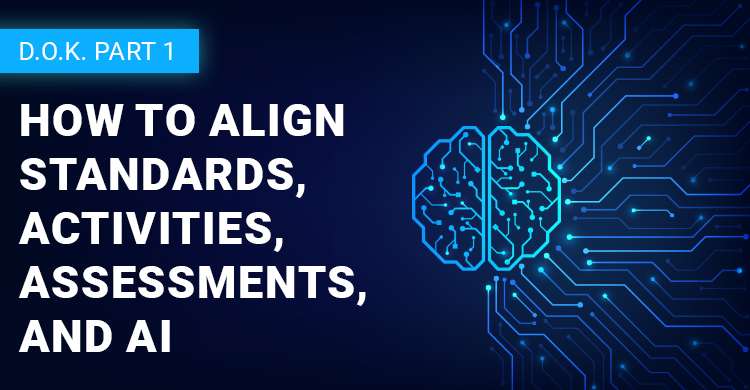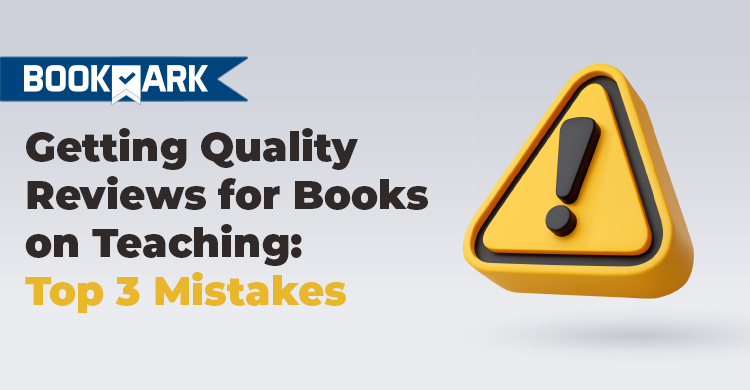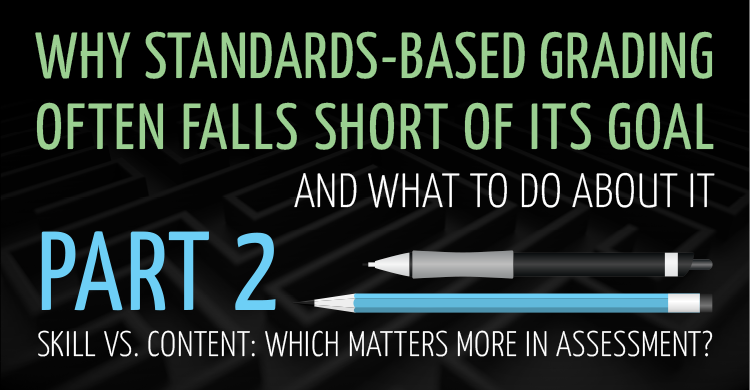E-marketplaces and generative artificial intelligence (AI) platforms have emerged as popular resources and repositories for teachers. Accessing assignments and sharing strategies has never been so easy, simple, and even inexpensive. In fact, some of these resources and tools will state the cognitive rigor—specifically, the level of Depth of Knowledge (DOK) demanded—of the available activity, item, question, or task.
But how aligned is that activity, item, question, or task to the grade level or content area standard being addressed and assessed in your school or class? Also, how could Depth of Knowledge and DOK levels determine the degree of alignment or consistency between academic standards and marketplace or AI activities and assessments?
What important role does alignment play in teaching and testing?
Alignment in teaching and testing involves ensuring that the critical elements of instruction and assessment address and assess learning outcomes not only accurately but also acceptably, appropriately, and authentically. The purpose of alignment in education is to determine the degree of consistency and correspondence between the following:
What our expectations are for our students
Expectations of what exactly students must learn and how deeply students must understand and use their learning of a specific subject or certain content at a given grade level. These are established by the learning intention and individual objectives of academic standards of performance established by an educational organization or academic standards for proficiency set by a federal, state or local education agency.
What activities we have planned to support our curriculums
Activities that engage and encourage students to understand and use their learning of a specific subject or certain content as part and a result of a teaching and learning experience at a given grade level. These are offered or provided by a curricular program, resource or tool that’s accessed or acquired by a school or individual staff members.
How our assessments will measure and determine success
Assessments address and assess what exactly students must learn and how deeply students must understand and use their learning at a given grade level. They can consist of standardized exams administered at the federal, state or local levels or formal and informal formative and summative assessments conducted in the classroom.
These are the core components for aligning teaching and testing. The expectations set by standards serve as the apex of the triangle to indicate that all activities and assessments should be consistent with what the learning intention or individual objectives address and assess. The degree of consistency between standards, activities, and assessments can vary depending on the intent and purpose of the teaching and learning experience.

4 critical questions that clarify alignment goals for teachers
Notice the word “degree” is used to describe the consistency or alignment between standards, activities, and assessments. A curricular activity or assessment item is not required to address and assess a specific standard completely or at its deepest level of complexity and demand—unless that’s the intent and purpose of the activity, item, question, or task.
As Karin Hess (2018) advises, “Multiple items or performance tasks covering a range of DOK levels will provide the most useful instructional information for teachers” (p. 614).
At the same time, it is essential both teachers and students understand the following about academic standards, curricular activities, and assessment items:
- What exactly must students learn?
- How deeply must students understand and use their learning?
- How many objectives must the students achieve to demonstrate proficiency?
- How closely does the activity or item address and assess the standard?
These are the four critical questions teachers must examine when checking the degree of consistency between academic standards, activities, and assessments. Not only will this clarify the goals and expectations of standards, the learning objectives of activities, or the performance measures of assessments. It will also prompt teachers to consider whether they need to adjust or modify the activity or assessment based on the demand of the standard and the strengths of the students.
Why checking the curriculum’s alignment is so essential
According to Dr. Norman Webb (1997), who created the concept of Depth of Knowledge, “Assuring the alignment between expectations and assessments can strengthen an education system in important ways” (p. 1). For example it:
- Gives more credibility and confidence that the curricular activities and assessment items are addressing and assessing a standard at its intended level of complexity and demand.
- Improves the effectiveness and the efficiency of the education system at the federal, state, and local levels by establishing the expectations for student performance and ensuring students are being taught and tested at the appropriate level demanded.
- Prompts the system of education and its stakeholders to pick and prioritize what exactly students must learn and how deeply students must understand and use their learning to demonstrate proficiency, develop competency, or perform successfully in a specific subject or with certain content at a given grade level.
- Provides the system of education and its stakeholders the ability to map, measure, and monitor students’ learning performance and progress as they proceed through school.
(Webb, 1997)
Maintaining quality control in the face of generative ai curriculum
Traditionally, alignment studies have focused primarily on checking the consistency and confirming the validity between academic standards, the curricular activities produced by publishing companies, and assessment items administered by testing companies. Again, while the activities and items do not need to be fully aligned to the standard they address and assess, their complexity and credibility are usually vetted by a staff of trained practitioners or trusted professionals in a specific subject.
Unfortunately, the same cannot be said for e-marketplaces that offer curricular materials or generative artificial intelligence programs that produce activities, lessons, or questions. Not only must we check how closely these activities and items address and assess the specific standard being taught and tested. We also must consider the credibility of the sources and the reliability of the materials.
About the Educator
Erik M. Francis is an international author, educator, and presenter. He provides professional development on how to plan and provide engaging teaching and learning experiences that are academically rigorous, socially and emotionally supportive, standards-based, and student responsive. He is the author of Deconstructing Depth of Knowledge and Inquiring Minds Want to Learn.






